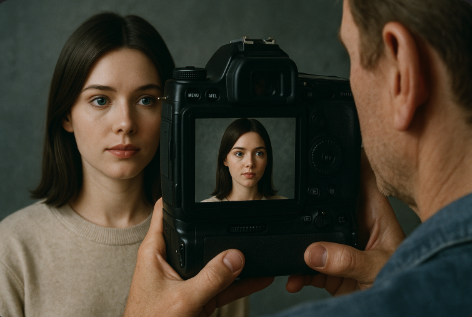A famous model posts a selfie and millions like it. However, here’s the twist: she doesn’t exist. There are no school photos, no birth certificate, and no awkward teen years. What exists is just a digital file and a name, created by a machine. These “synthetic celebrities” are taking over feeds, stages, and screens.
They don’t need sleep, they don’t get older, and they don’t mess up on live TV. Fans follow them like they’re real people, but they’re not. Still, the line keeps getting thinner. People talk to them, and brands pay them. What’s real doesn’t seem so clear anymore. Let’s unpack how we got here and where this leads.
The Rise of Digital Fame
These days, fame doesn’t require a heartbeat. CGI faces and AI-generated personalities are climbing into the spotlight. They sing, speak, smile, and people follow. What was once sci-fi now lives on your phone screen. Let's break down the strange parts that keep pulling people closer to these digital ghosts.
1. Who Are These “People” Anyway?
They have names, jobs, and personalities, but they aren’t alive. These synthetic figures are made by code, voice models, 3D tools, and machine logic. Someone, somewhere, wrote their stories and shaped their faces. Then, they launched them into public view. Some examples include:
- Lil Miquela: a “teen” model and singer
- Shudu: a digital supermodel
- FN Meka: a virtual rapper
These names sound real, and even their social accounts look real. But none of it is rooted in flesh or history. It’s artificial fame on purpose.
2. Fans Don’t Seem to Mind
People treat them like celebrities. They ask them questions and argue over their choices. Not only that they even buy products they “promote.” The trick is that it feels familiar. The format is the same. Posts, comments, selfies, etc., all mirror real influencers. The digital part fades into the background.
Even though the creators hide behind a screen, the digital star stands in the spotlight. It’s a performance, and it works.
3. Brands Are Hooked Too
Companies want eyeballs, and synthetic celebrities deliver them. These AI stars never age. They follow directions and don’t miss deadlines. All of this is attractive to marketers. Brands now team up with digital figures for:
- Product launches
- Social campaigns
- Music or fashion shows
It’s cheaper, cleaner, and people click. Some fans even say the ads feel more “real” than human ones. For companies unsure where to start, TrustFeed.io can point to platforms already using digital personalities, good, bad, and everything in between.
4. Real Humans Compete with Fictional Ones
Aspiring artists used to compete with other people. That is no longer the case, as now they compete with programs. That changes the rules. A singer might lose a gig to a perfect digital voice, or a model might be replaced by pixels that never blink. And a speaker might be outshone by a chatbot with flawless grammar.
That’s tough, and some human influencers are starting to copy the style of AI personas just to keep up. Others are teaming up with them, posting side-by-side content to stay relevant. The playing field isn’t level, and it’s shifting beneath everyone’s feet.
5. What’s Real Gets Harder to Spot
Lines blur fast. If a fake person posts about heartbreak, but the story feels true, does it matter?
Some say no, while others say it matters a lot, especially for younger audiences who may not know what’s behind the curtain. And let’s not forget the tech keeps improving. Faces look more lifelike, voices sound smoother, and movements mimic real behavior. It’s not always easy to tell the difference anymore.
That makes trust harder to build and easier to break. People might bond with someone who doesn’t exist. They might listen to advice from an actor who never lived.
6. The Law Hasn’t Caught Up
There are no rules or real limits, and that’s the truth behind most digital celebrities. There are no clear laws about who owns their content or what rights the audience has. Furthermore, this is no law about what kind of disclosure is needed when a brand works with a fake face.
Right now, anything goes, and this legal vacuum lets creators experiment wildly. However, it also means there's no safety net if things go sideways, and they have before.
Some digital stars were accused of racial bias. Others were criticized for faking real experiences. But since they’re not real people, apologies feel hollow. And consequences rarely stick.
Conclusion
Synthetic celebrities don’t sleep, and they don’t eat. However, they get views and influence real lives. The line between fake and real keeps smudging. As these figures grow louder, we’ll all have to ask harder questions. Who gets to be famous? And what does “real” even mean anymore?
